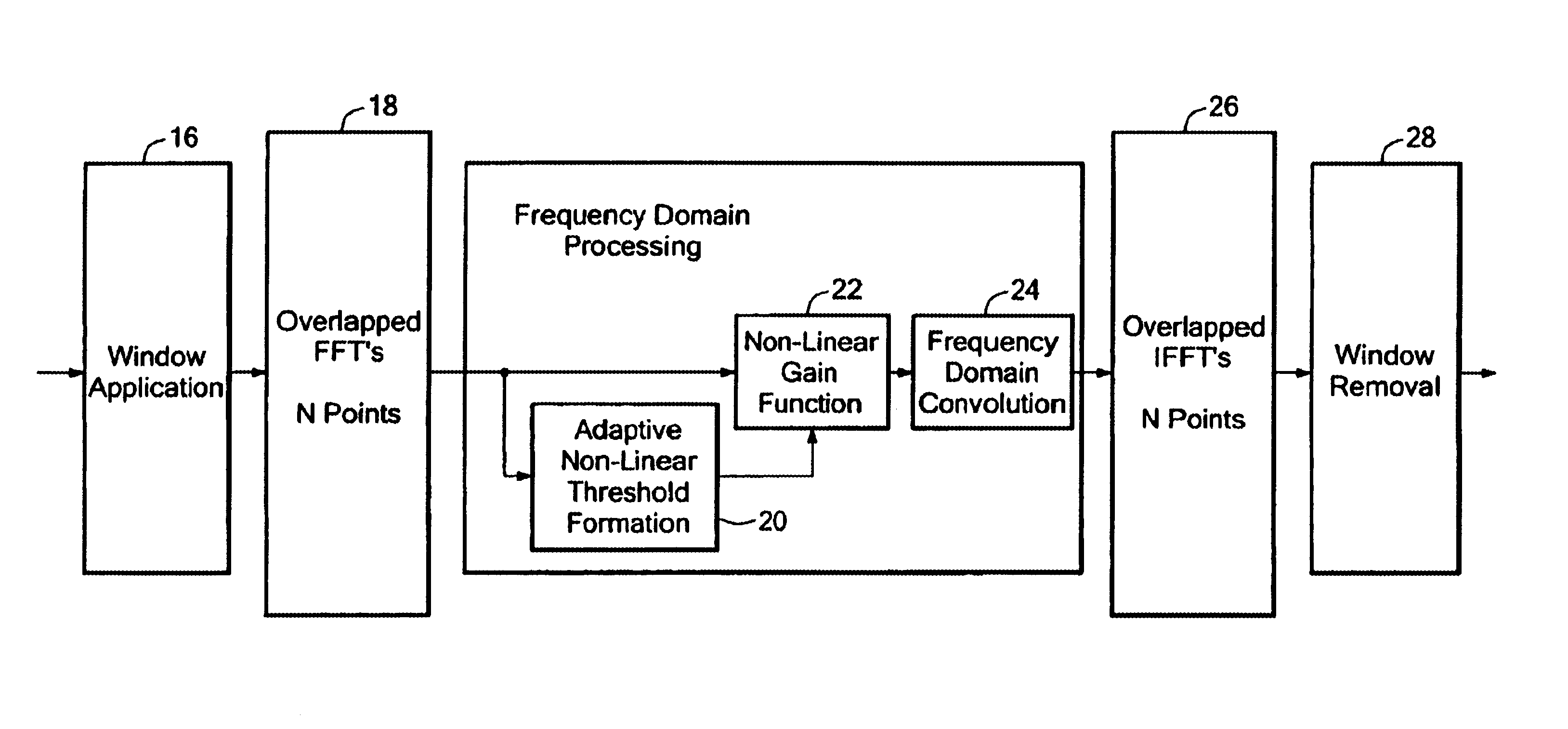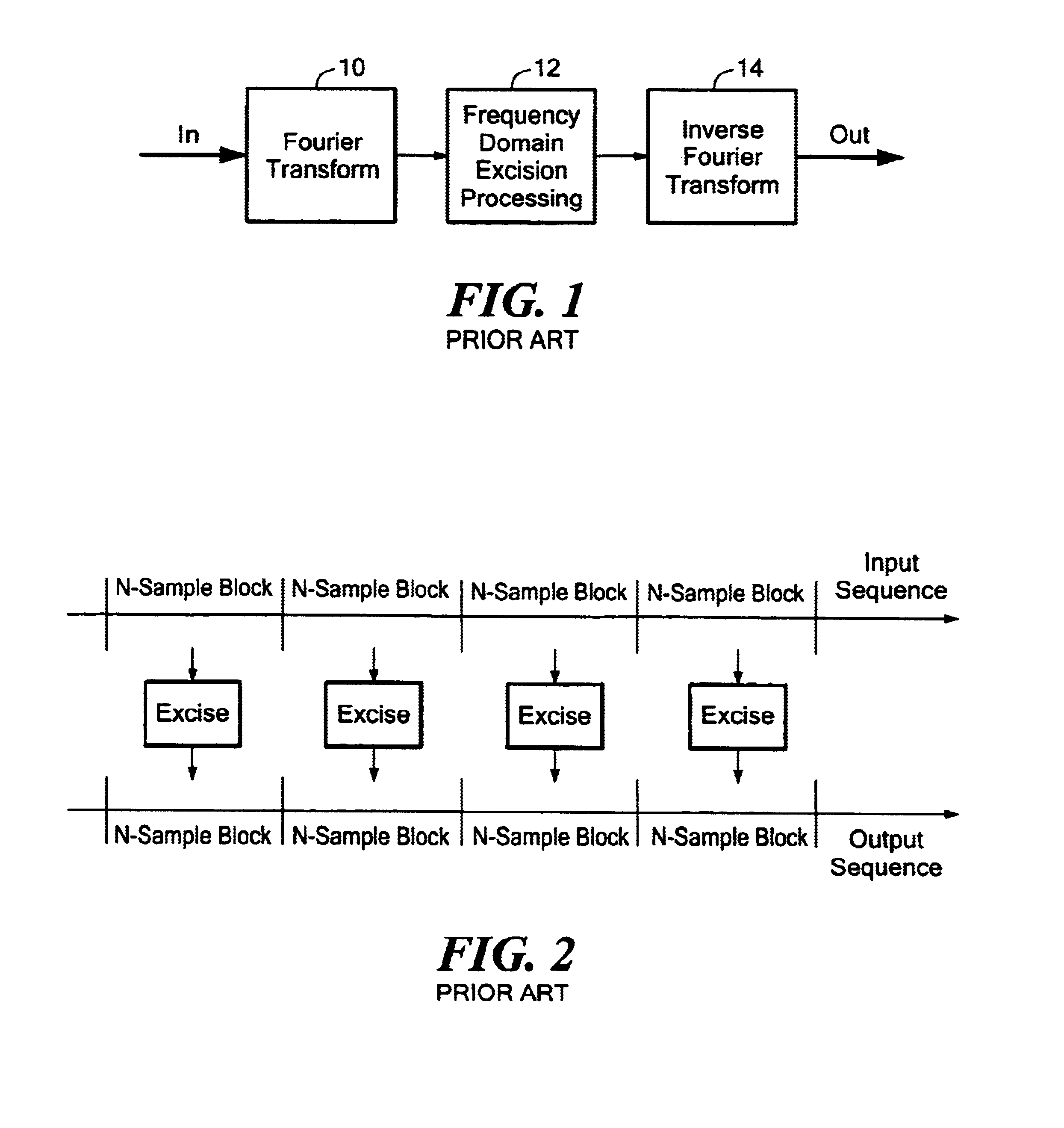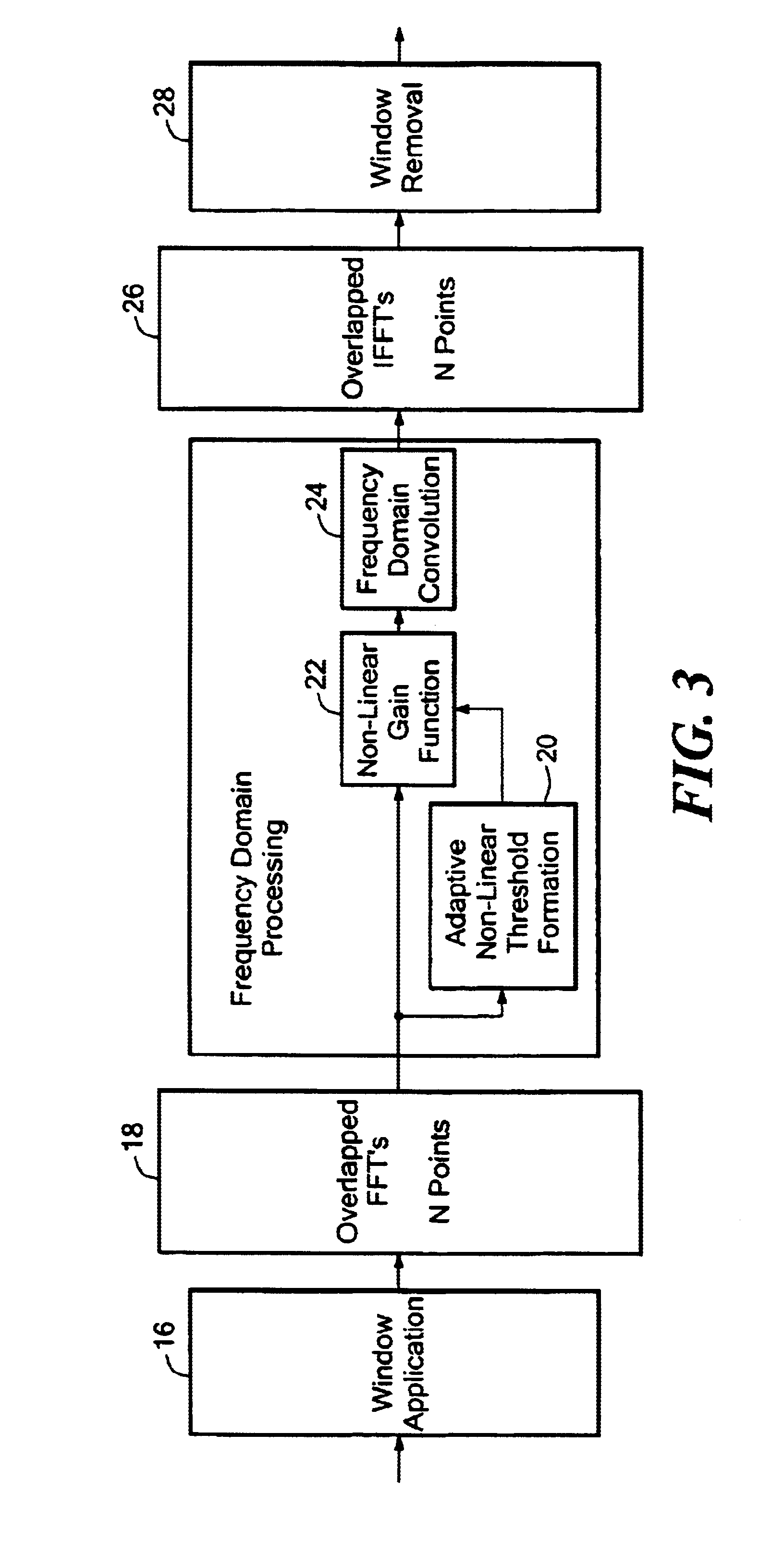Interference suppression in a spread spectrum communications system using non-linear frequency domain excision
a spread spectrum communication and suppression technology, applied in the field of interference suppression in wideband communications systems, can solve the problems of narrowband interfering signal generally, significant degraded communications performance, and degraded service quality for narrowband as well as wideband users
- Summary
- Abstract
- Description
- Claims
- Application Information
AI Technical Summary
Benefits of technology
Problems solved by technology
Method used
Image
Examples
Embodiment Construction
FIG. 1 shows the basic components of a classical frequency domain excision system. As described above, excision processing generally begins with a Fourier transform 10 (such as the FFT) to convert a block of input time waveform into the frequency domain. Once the frequency domain representation has been generated, the locations of the interfering signals are determined, generally by identifying anomalous peaks in the Fourier spectrum. Non-linear processing 12 is performed on the spectral coefficients to suppress the effects of unwanted narrowband signals. The modified frequency domain coefficients are then transformed back to the time domain using an inverse Fourier transform 14 in order to construct the output signal.
As shown in FIG. 2, the Fourier transform typically operates on finite length blocks of successive samples of the input signal. In the most basic implementation of a frequency domain excision system, the continuous input sequence is divided into contiguous blocks of N ...
PUM
 Login to View More
Login to View More Abstract
Description
Claims
Application Information
 Login to View More
Login to View More - R&D
- Intellectual Property
- Life Sciences
- Materials
- Tech Scout
- Unparalleled Data Quality
- Higher Quality Content
- 60% Fewer Hallucinations
Browse by: Latest US Patents, China's latest patents, Technical Efficacy Thesaurus, Application Domain, Technology Topic, Popular Technical Reports.
© 2025 PatSnap. All rights reserved.Legal|Privacy policy|Modern Slavery Act Transparency Statement|Sitemap|About US| Contact US: help@patsnap.com



